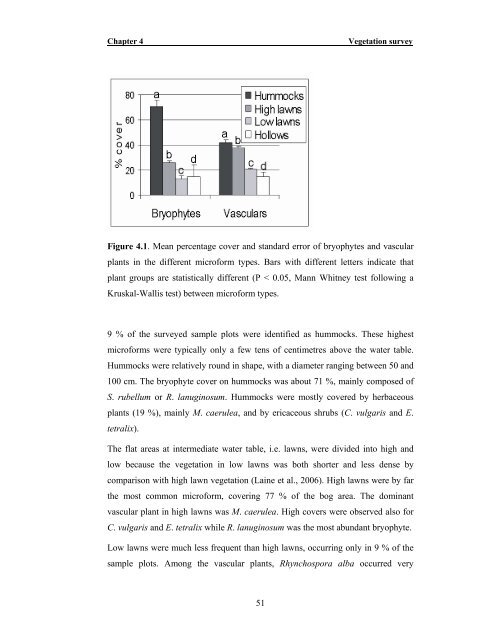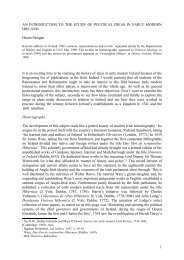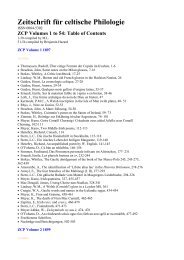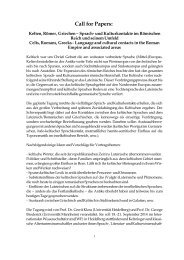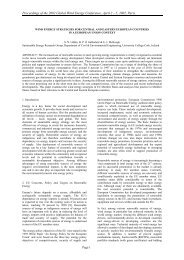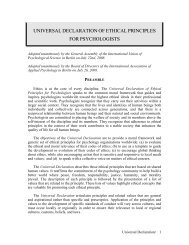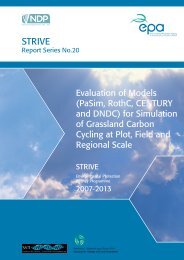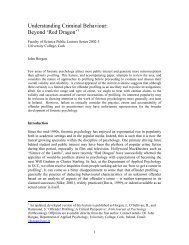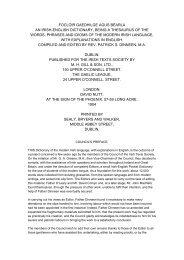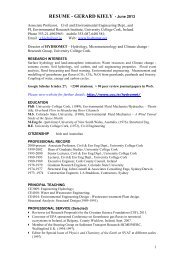PhD Thesis, 2007 - University College Cork
PhD Thesis, 2007 - University College Cork
PhD Thesis, 2007 - University College Cork
You also want an ePaper? Increase the reach of your titles
YUMPU automatically turns print PDFs into web optimized ePapers that Google loves.
Chapter 4<br />
Vegetation survey<br />
Figure 4.1. Mean percentage cover and standard error of bryophytes and vascular<br />
plants in the different microform types. Bars with different letters indicate that<br />
plant groups are statistically different (P < 0.05, Mann Whitney test following a<br />
Kruskal-Wallis test) between microform types.<br />
9 % of the surveyed sample plots were identified as hummocks. These highest<br />
microforms were typically only a few tens of centimetres above the water table.<br />
Hummocks were relatively round in shape, with a diameter ranging between 50 and<br />
100 cm. The bryophyte cover on hummocks was about 71 %, mainly composed of<br />
S. rubellum or R. lanuginosum. Hummocks were mostly covered by herbaceous<br />
plants (19 %), mainly M. caerulea, and by ericaceous shrubs (C. vulgaris and E.<br />
tetralix).<br />
The flat areas at intermediate water table, i.e. lawns, were divided into high and<br />
low because the vegetation in low lawns was both shorter and less dense by<br />
comparison with high lawn vegetation (Laine et al., 2006). High lawns were by far<br />
the most common microform, covering 77 % of the bog area. The dominant<br />
vascular plant in high lawns was M. caerulea. High covers were observed also for<br />
C. vulgaris and E. tetralix while R. lanuginosum was the most abundant bryophyte.<br />
Low lawns were much less frequent than high lawns, occurring only in 9 % of the<br />
sample plots. Among the vascular plants, Rhynchospora alba occurred very<br />
51


